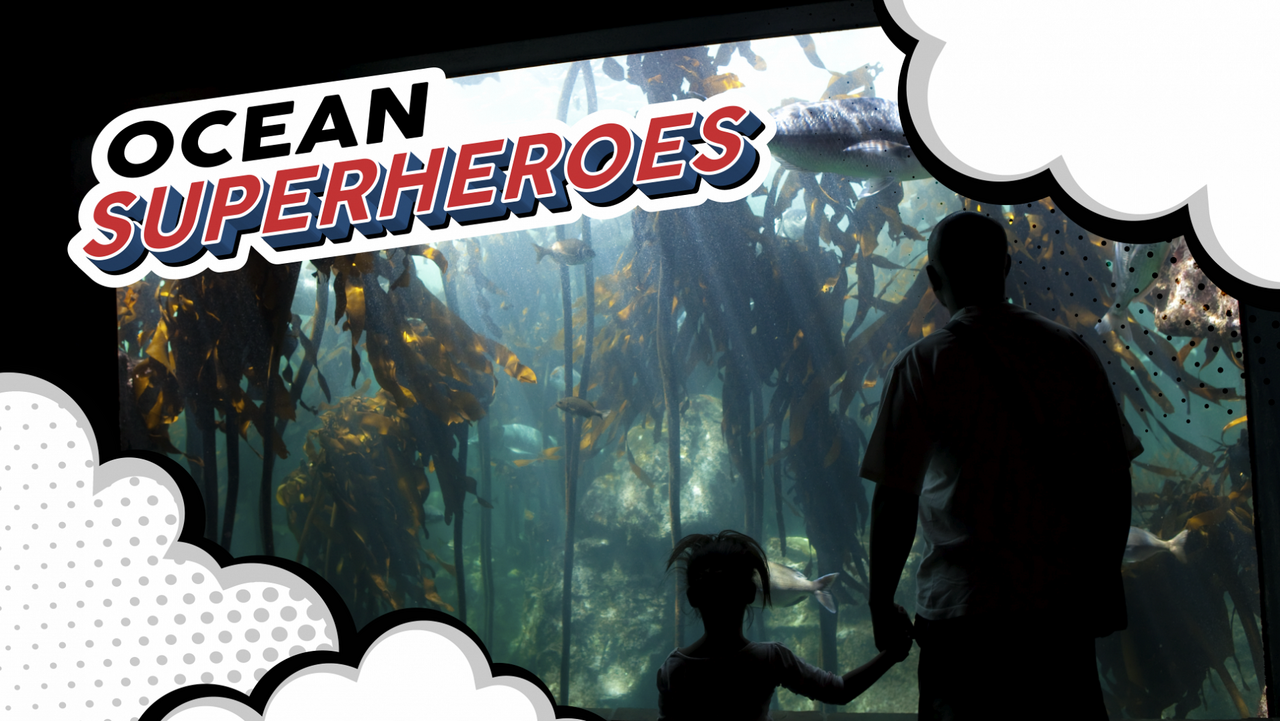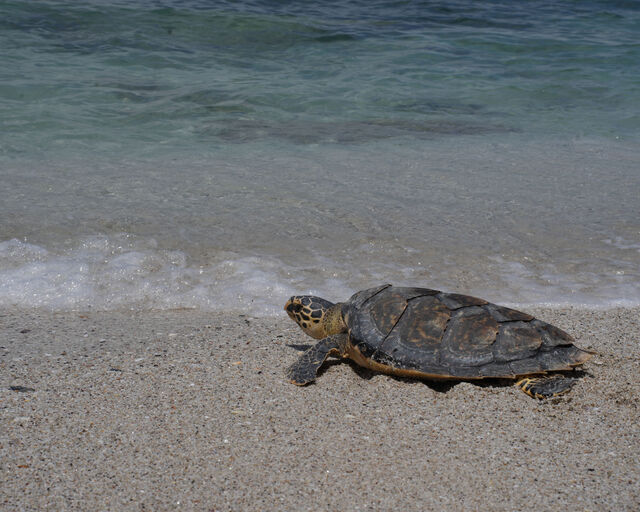Kelp is a marvellous organism. It may "just be algae", but it gives the South African ocean life, has become an icon of marine conservation, and is also pretty good eating! Let's take a look at everything you need to know about kelp:
All dripping in tangles green,
Cast up by a lonely sea;
If purer for that, O Weed,
Bitterer, too, are ye?- Herman Melville, The Tuft of Kelp (1888)
Kelp is the largest and fastest-growing marine algae or seaweed, and belongs to the brown algae group known as Phaeophyta - so although kelp may resemble an underwater plant, it is in fact a protist, the same family of organisms as moulds and amoebas.
Kelp forests are found in the temperate and polar coastal regions of the world. Four species of kelp are found around the South African coast, with Ecklonia maxima being the most familiar, often being washed up on beaches following heavy storms. Three of these species, namely sea bamboo (Ecklonia maxima), split-fan kelp (Laminaria pallida) and bladder kelp (Macrocystis pyrifera) can be seen in the Kelp Forest Exhibit at the Two Oceans Aquarium.
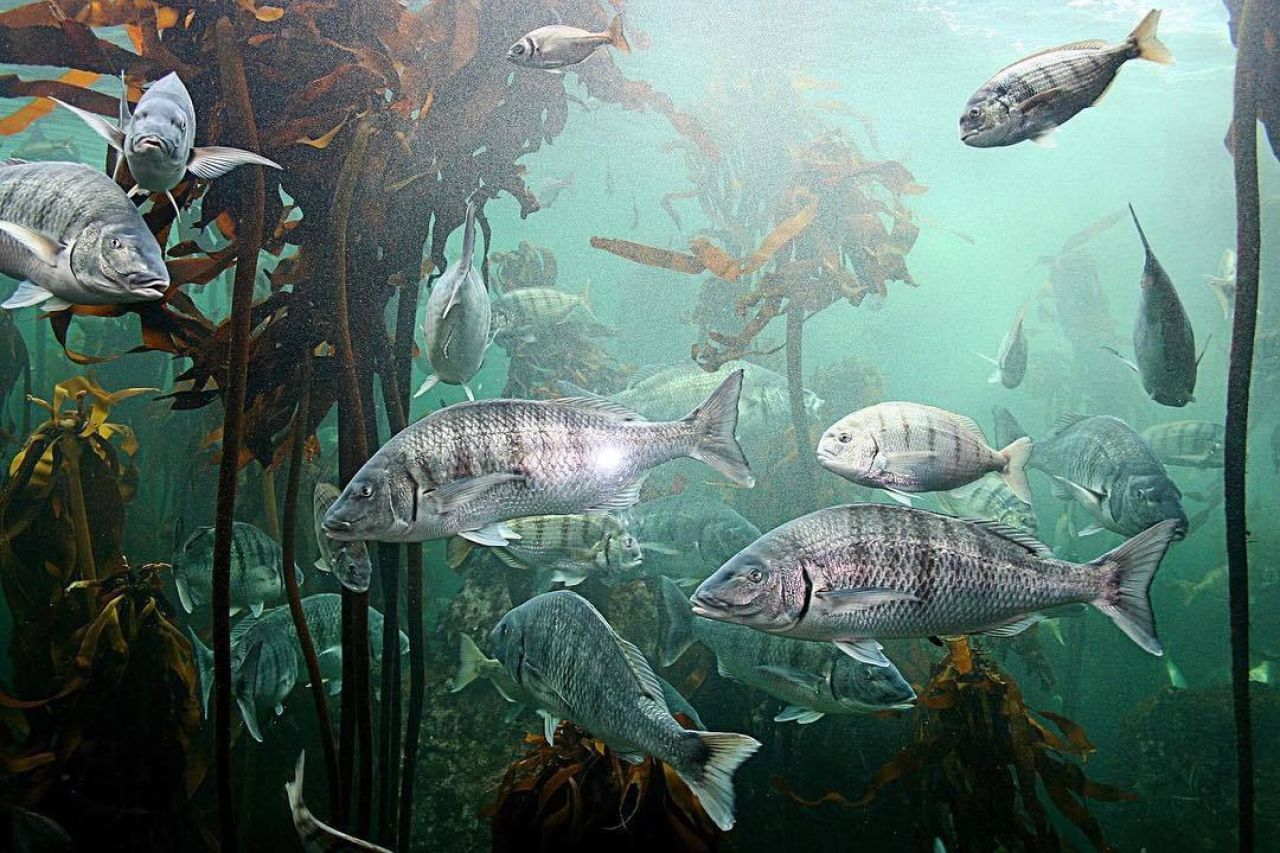
Kelp forests provide a source of food and shelter to a variety of species including fish, crayfish, sea cucumbers, limpets and filter feeders. The slimy mucus on kelp is rich in organic compounds that encourage the growth of bacteria, which in turn forms the building blocks of the food chain within the kelp forest ecosystem. Our Kelp Forest Exhibit is teeming with life. You can spot many fish, including South Africa's national fish the galjoen, large white steenbras, spotted gully shark and red stumpnose, while gazing at the Aquarium’s enchanting display.
Although several kelp species have a wide distribution, most kelp grows in large groups known as "kelp forests." Kelp forests are typically found in temperate and sub-polar regions with good water clarity and abundant nutrients, with only one tropical kelp forest being known from the coast of Ecuador. The most notable kelp forest are found on the coasts on Southern Africa, the US West Coast, Argentina, Chile, southern Australia and several northern European coasts.
South Africa is one of only a few countries in the world that finds natural kelp forests on its coast. Together with Namibia, we are also the only countries in Africa that have kelp forests! Many of our species of kelp are unique, so let's take a look at some South African kelp types you might encounter:
Like plants that you are likely more familiar with, kelp needs sunlight to photosynthesise and convert carbon dioxide into sugars. Unlike plants, however, kelp does not use roots to extract nutrients from the soil - kelp can extract the needed nutrients directly from the water around it. So, instead of a "root system" it has a modified anchoring system known as a holdfast.
The Aquarium’s Kelp Forest Exhibit provides access to natural sunlight, wave action and water movement (for nutrient distribution) and the optimum water temperature; elements all needed for a healthy kelp forest to grow.
Take a dip in our kelp forest! The Kelp Forest Exhibit is open to all recreational scuba divers.
Like forests on land, kelp forests are vital habitats for thousands of unique species. Their rapid growth and conversion of carbon dioxide into energy is a vital source of food for animals like abalone and urchins. The sheltered environments amongst the kelp serve are refuges and nurseries for countless species of fish. Even shore habitats, such as human settlements and bird nesting sites are often protected by offshore kelp forests that dampen the effects of waves and prevent erosion of the coastline.
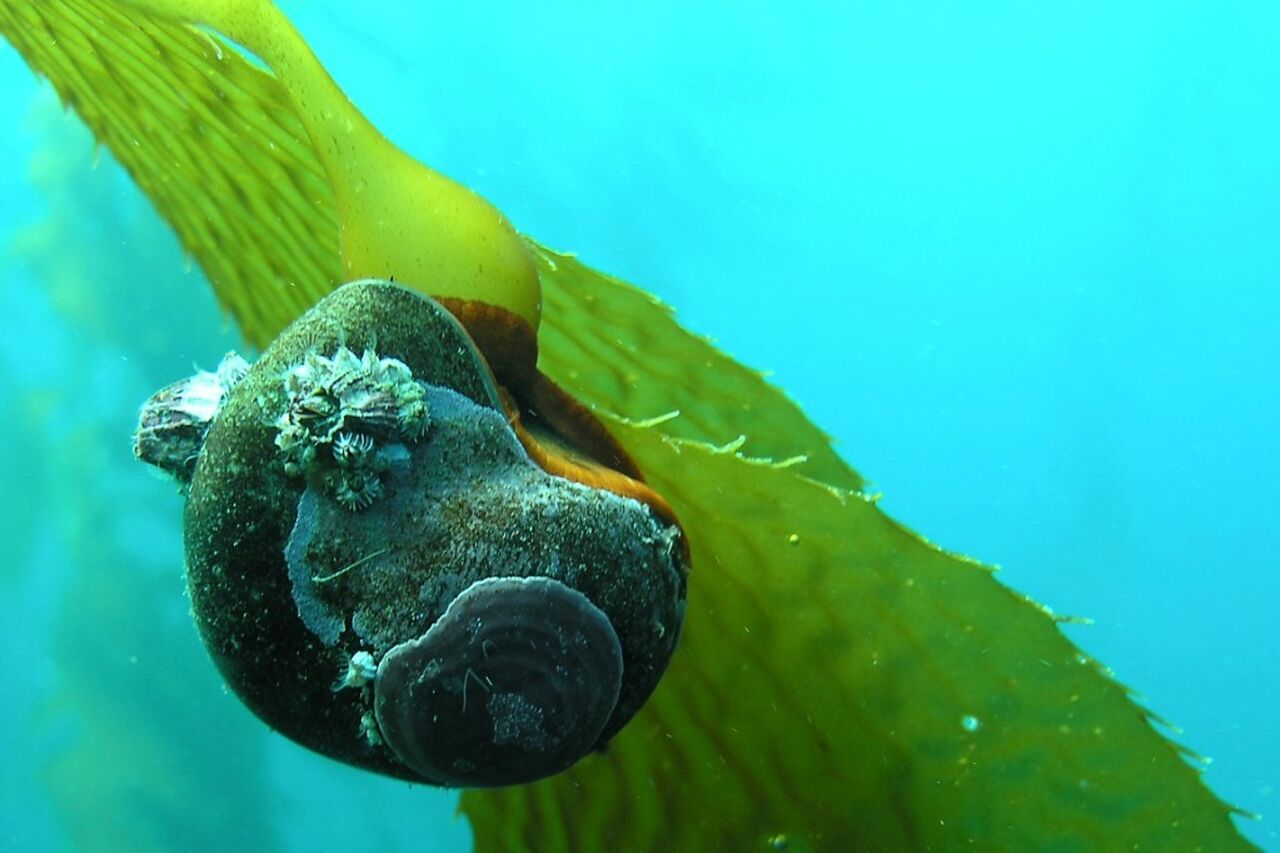
One of the reasons kelp is so vital for the formation of complex habitats is that it fills three of the five ecological niches that can be occupied by seaweed: The "canopy" formed by the floating fronds of large species like sea bamboo, the "stipitate" of stiff kelps that rise like small trees (like split-fan kelp), and kelps that lie directly against the seafloor, like our spined kelp. These types of kelp in turn support populations of other algae and sessile animals that live directly on the seafloor.
Yes! Plenty of people and cultures eat kelp and kelp-based products - but be careful, this does not mean you can simply pick up a piece of kelp and eat it! Local foraging organisations such as Veld and Sea use kelp in recipes. It is touted as a “superfood” and contains a variety of vitamins and minerals, including vitamin B, zinc, copper, calcium, iron and more.
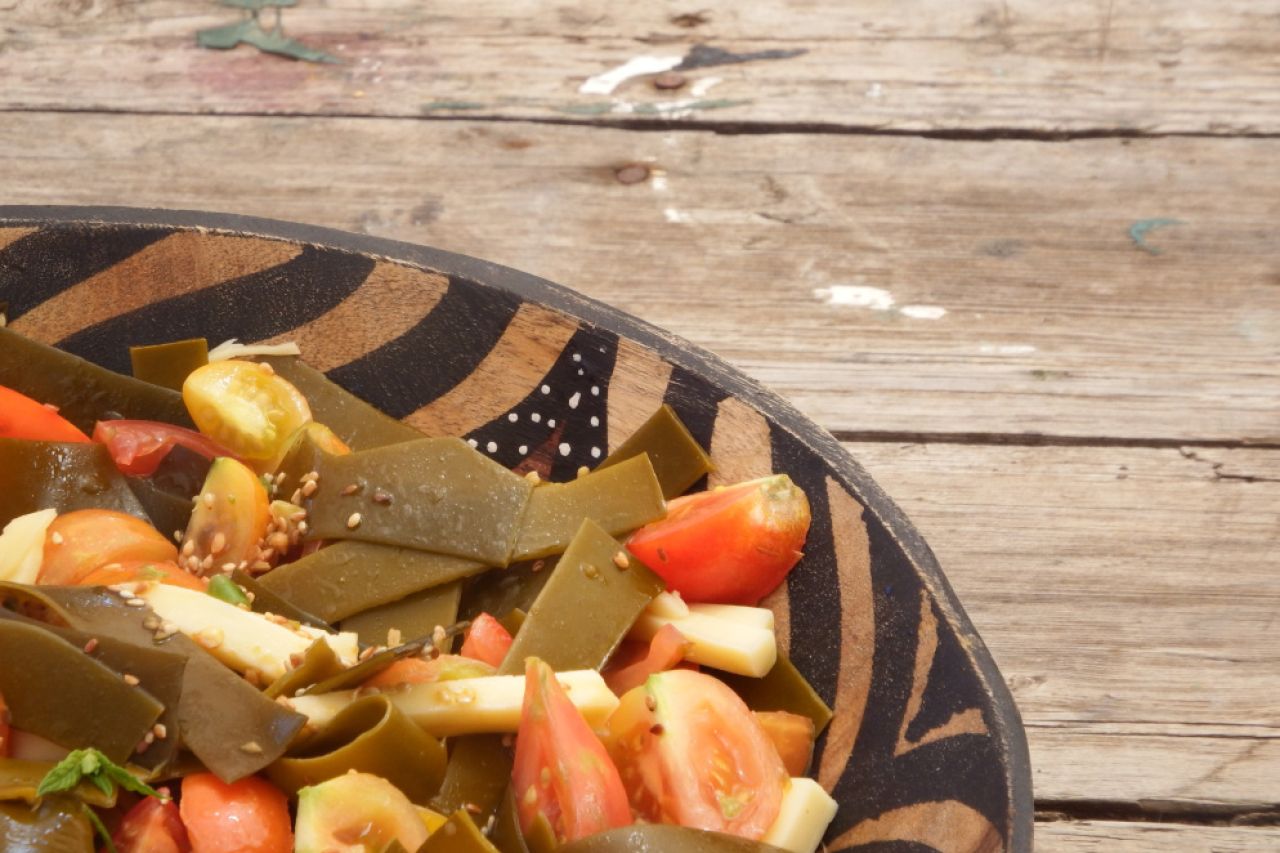
The oldest kelp recipe we know of is for Japanese "kombu", which is made from their local kelp species, most similar to South Africa's split-fan kelp. The kelp is shredded and dried or pickled, later used as a base for other meals. Boiling the kombu with fish sauce and water makes dashi - the base for Japanese soup dishes like miso soup.
The word "kelp" comes from one of its earliest uses - being burnt to make soda ash, a component in glass. Because the ash produced by this brown seaweed contained lots of iodine, it would often produce undesirable colour tints in the glass - so this type of ash was given the name "faulty", or as they said in Latin, culpe (think culprit or culpable). This name eventually morphed into "kelp" for the ash, and soon people started using the word to describe the seaweed too!
We obviously love kelp - but what makes this seaweed so important? Here are the reasons we think kelp matters:
- Kelp is a keystone organism, which means its role in the ecosystem is so vital, that without it the ecosystem would collapse.
- Kelp forests are among the most productive ecosystems in the world
- Due to climate change and elevated sea temperatures, the environment for kelp to successfully grow in is at risk. This poses a huge threat to biodiversity within the ocean
- Kelp purifies water and removes waste products produced by the animals living within the forests
- Underwater forests provide shelter, food and the ideal habitat for various species
- Commercially, kelp is used in a wide variety of products, from salad dressings, cosmetics, food, vitamin supplements, skincare products, paint, etc.
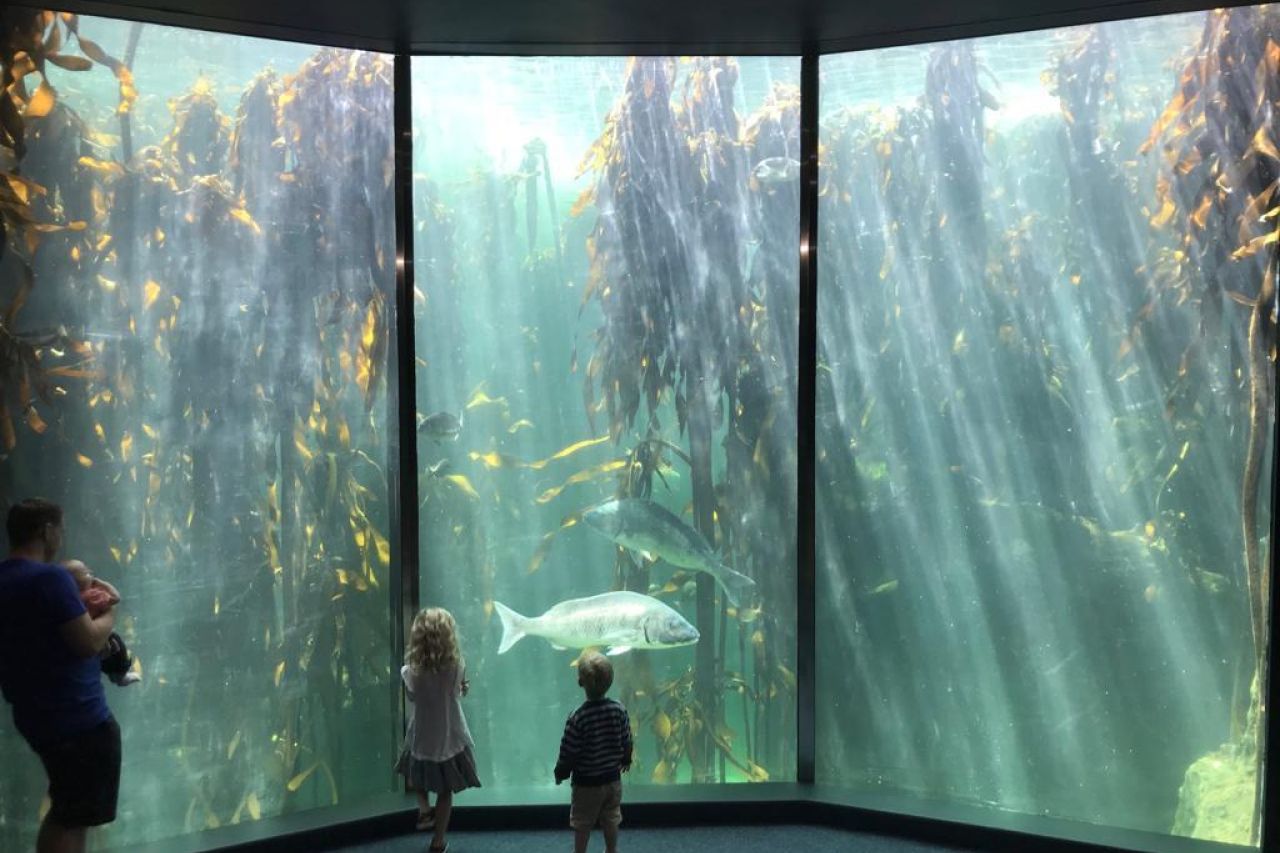
- Don’t litter – waste materials end up on our shores and pollute the ocean.
- Take part in beach and waterway cleanups
- Be aware of climate change and how an altered climate will affect the way kelp grows in our oceans and how this will influence the finely-balanced ecosystem. Kelp forests require cold, nutrient-rich environments to grow, and rising sea temperatures will threaten their longevity. You can reduce your carbon footprint by:
- Buying locally-made things
- Riding a bike or walking instead of driving everywhere
- Sharing transport. Join a lift club so fewer cars go to the same place
- Use public transport when you can
- Switch to environmentally friendly cleaning products. Remember: What we do on land affects the ocean!
